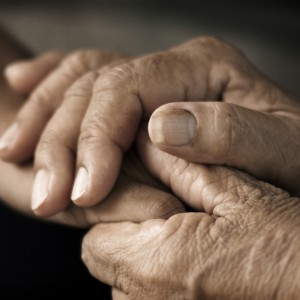Study Results Indicate That Morphea and Systemic Sclerosis Are Separate Diseases

A study recently published in the on-line journal Clinical and Experimental Rheumatology is challenging the clinical assumptions that morphea and systemic sclerosis (SSc) should be considered the part of the same disease spectrum. The study, entitled, “Prospective evaluation of frequency of signs of systemic sclerosis in 76 patients with morphea” was conducted by researchers  from France and Finland.
from France and Finland.
According to researchers at the University of Texas Southwestern Medical Center in Dallas, Texas, where a morphea patient registry has been established since 2007, this rare disease is considered an autoimmune disorder. The cause of morpheme is unknown, but many researchers in the field believe that an overproduction of collagen by the body’s collagen-producing cells is most likely responsible. The disease is diagnosed more frequently in women and most patients present with symptoms before the age of 18.
Since it was first diagnosed, Morphea has always been referred to as “localized scleroderma” due to the similarities commonly seen in these patients.
Morphea has several recognized clinical presentations in which the most common include:
- Circumscribed (plaque): Oval/round, solitary hardened areas that do not come together; if the plaque begins to affect the deeper tissue is referred to as morphea profunda.
- Generalized: Four or more plaques (lesions) that merge together and are larger than 3 centimeters on two or more anatomic regions; variant with deep lesions affecting the majority of the body surface area.
- Linear: Band-like thickening or large plaques that form a linear pattern, may involve deeper tissues; facial anatomy can also be affected.
[adrotate group=”3″]
Study Methods
To assess the clinical assumption that Morphea is “localized scleroderma,” the researchers compared 76 patients with Morphea (Plaque morpheme was seen in 49 patients, linear morpheme was seen in 18 patients and generalized morpheme was seen in nine patients) to 101 individuals without the disease (control group) and followed them for signs that were indicative of a clinical definition of SSc.
Prior to enrollment, all of the participants underwent a full clinical exam to check for signs of SSc, including:
- Raynaud’s phenomenon
- Telangiectasia: small dilated blood vessels near the surface of the skin
- Visible nail-fold capillaries
- Sclerodactyly: thickening of the skin around the digits
- Digital ulcers or scars
- Sicca syndrome: immune disorder resulting in abnormally dry eyes and mouth
- Shortness of breath
- Acid reflux
After following these patients for an average of 8 years of disease duration, the researchers did not find any evidence that the morphea study population developed SSc.
When discussing the study findings, the researchers said, “Signs indicative of SSc are statistically not more frequently present in patients with morpheme than in controls and this study does not support the view that those 2 entities are part of a common disease spectrum.”
About the Morphea Registry
Established in 2007, the Morphea in Adults and Children (MAC) cohort is the first registry for both children and adults with morphea (localized scleroderma) in the country. The purpose of the Morphea Registry is to learn more about morpheme, specifically how morpheme behaves over time, how frequently specific problems occur along with morpheme (for example, arthritis), and whether morpheme has an autoimmune background.






